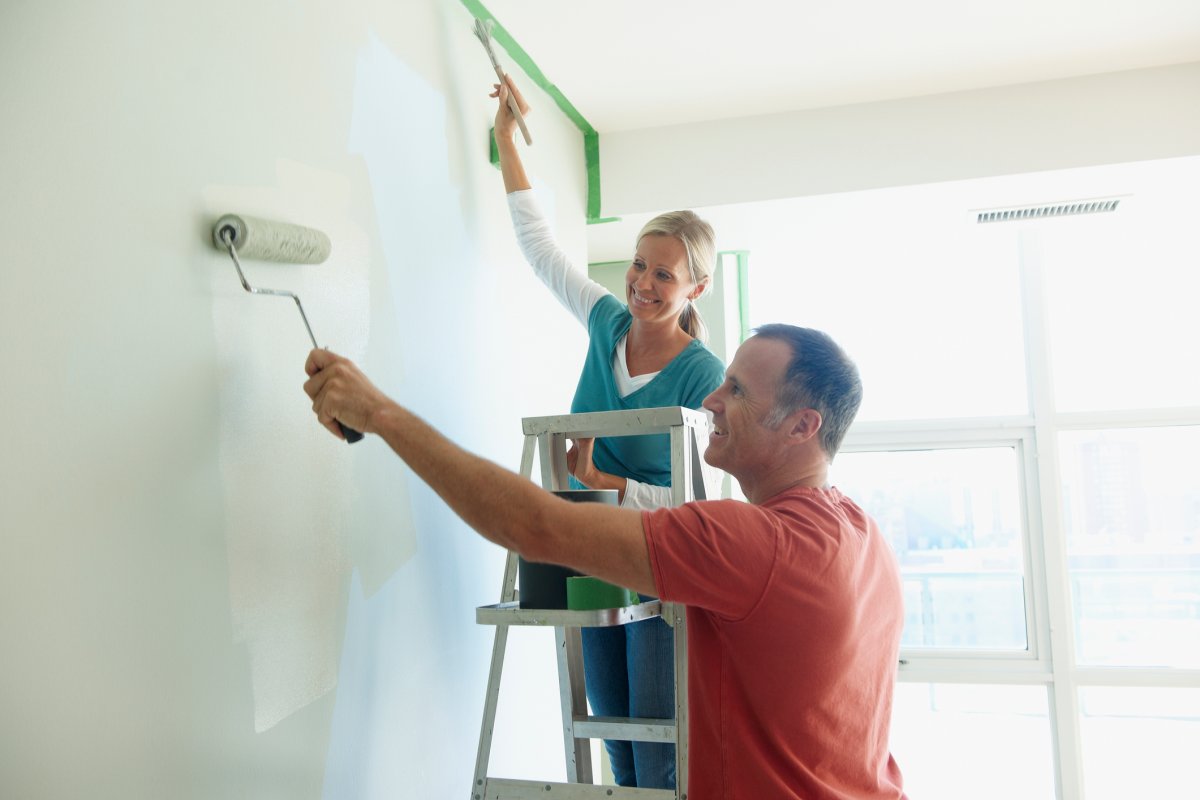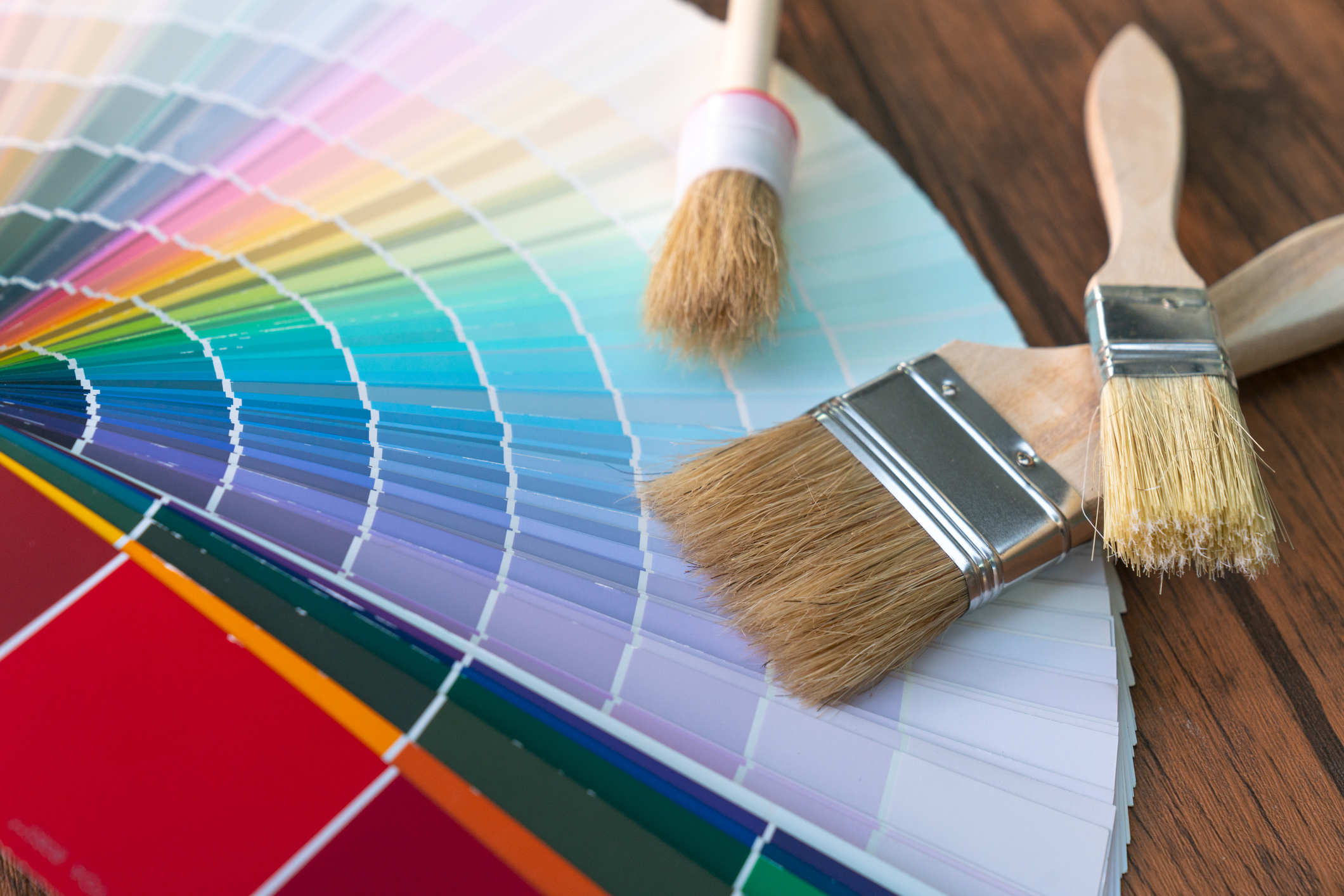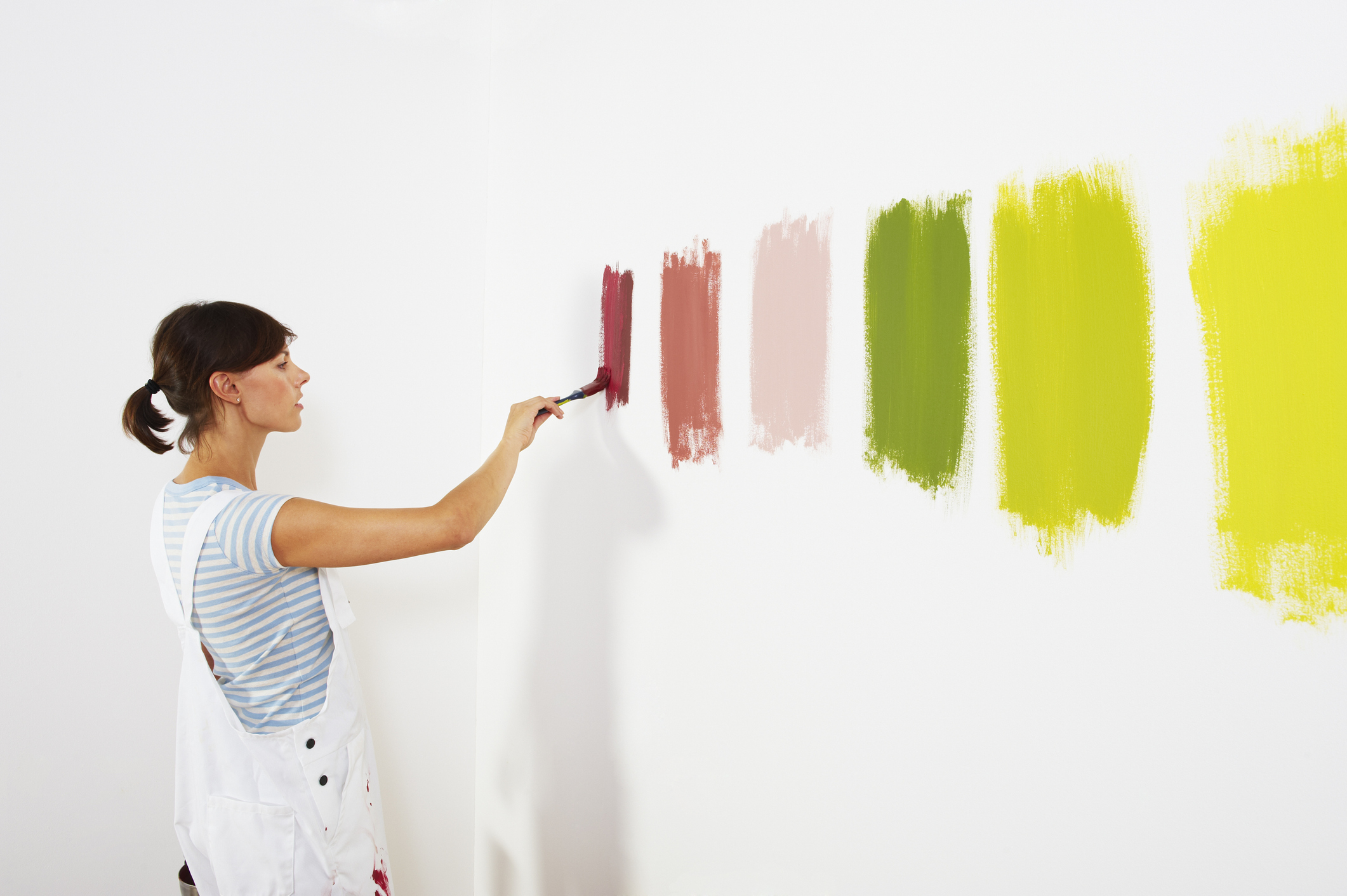

We may earn revenue from the products available on this page and participate in affiliate programs. Learn More ›
If you’re in it just for the flip, then home projects or a home renovation are all about the return on investment (ROI). But if you plan to live in your home for years to come, then you probably want to create a space that makes you feel happy and comfortable as you enjoy your daily life with loved ones.
A recent study by Thumbtack—a technology company that connects people with home improvement guidance and a community of more than 300,000 local businesses—explored whether people are renovating their homes for solely financial gains or to experience joy. Thumbtack surveyed 1,000 homeowners and found that, even with unpredictable market conditions, those responding are prioritizing long-term happiness in their home over resale value. More specifically, 84 percent of homeowners say they are prioritizing projects that bring happiness over ROI, including 68 percent of homeowners planning to sell their home in the near future.
This means that people are more likely to make decisions about home design and upgrades based on their own needs, not on what future buyers might want. The reasons for this focus, according to survey respondents, include planning to stay in their home for many years to come, recognizing that they simply want to enjoy their space, and prioritizing joy since they spend so much time at home. The major theme pointed out in the survey is that “a home is an experience, not just an asset.”
The survey then looked at the types of home upgrades that bring people the most joy. Interior painting topped the list. With an average “resale” value of $2,152, homeowners surveyed feel that this is the kind of home project that they would still do even if it doesn’t pay off in ROI. Here, we’ll look at the benefits of interior painting, some DIY tips for starting your own interior painting project, and additional joy-promoting home improvement projects based on the survey.
Interior painting is a mood booster.
One of the reasons interior painting made it to the number one spot on the survey’s list of joyful home renovation projects is that the color of a room can quickly improve how we feel emotionally. Painting a room can be more than a home improvement task—it can serve as a therapeutic act of self-regulation, says Dr. Bev Walpole, clinical psychologist and founder of Haven Wellness by Design in Ontario, Canada.
“As a clinical psychologist and wellness designer, I often remind clients that our environment plays a quiet but powerful role in our mental health,” says Walpole. “Color has a direct impact on our nervous system: soft greens and warm neutrals can support calm and restoration, while uplifting tones like clay pink or ochre can spark motivation and joy.” She often recommends limewash paint for clients since it’s less about precision and more about process. “The textured, organic finish and repetitive brushwork can have a grounding, almost meditative quality. For many, it becomes a sensory-rich practice that restores a sense of control and creativity.”

Interior painting improves a space.
A fresh coat of paint in the right color can enhance the overall aesthetic of a room. It can quickly update the look of a home without you having to invest a ton of time and money, like you might with a more intensive remodeling project. Several practical benefits of painting can improve the indoor environment.
- Hides stains and marks: Paint over stains and marks on the walls to provide a cleaner looking surface.
- Protects surfaces: Painting helps protect indoor surfaces from moisture and general wear and tear.
- Changes the perception of a room: By using different colors of paint, you can trick the eye into thinking a room is a different size or shape without having to knock down walls or change what’s in the room. Paint can make a room seem taller, wider, or longer. An accent wall can shorten a room, while using warm colors can create a closer, more comfy feel. Finally, you can create a sense that one room is expanding into another by choosing the same paint color for both spaces.
- Improves indoor air quality: Enjoy healthier indoor air quality by painting the interior of your home with zero-volatile organic compound (VOC) or low-VOC paints.
Painting is accessible.
Fortunately, interior painting is an accessible DIY project for many people and one that they can complete comfortably. It is affordable, typically costing between $2 and $6 per square foot to paint a room (a total cost in the range of $955 and $2,890) when including labor by pros. However, if you paint a room yourself, you’ll pay $30 to $60 for a gallon of standard paint, which should cover 350 to 400 square feet of wall. And painting doesn’t require a great deal of time; it usually takes about 6 to 10 hours to paint one room, depending on the size of the room and how much help you have.
It’s helpful to paint one room at a time to shift the look and feel of your home, preventing a major financial or time investment all at once. “I often suggest beginning with spaces where emotional tone matters most, like bedrooms or entryways,” says Walpole. “It’s a beautiful way to align your outer world with your inner state.”
It’s also easy to find supplies online or at a local hardware store or major retailer. Depending on what’s needed, paint and supplies can cost from around $200 to $300. Here’s a list of what to purchase:
- Brushes: $3 to $20 each
- Painter’s tape: $3 to $10 per roll
- Drop cloth: multi-packs starting at $9
- Paint tray: $2 to $5
- Rollers: Average from $10, but can be as much as $100
- Ladder: $70 to $300
- Or a painting kit: $10 to $20 each (includes trays, brushes, and roller heads)

Follow these tips for DIY painting.
If you are ready to experience joy giving your interior a facelift, but have never painted a room before, you’ll find these basic steps helpful to get you started.
Follow these steps to paint a room:
- Step 1: Clear and prepare the room.
- Step 2: Choose your paint colors and tools.
- Step 3: Apply painter’s tape (if needed).
- Step 4: Protect floors and furniture with drop cloths.
- Step 5: Prime your surface.
- Step 6: Stir (or shake) your paint.
- Step 7: Paint the ceiling.
- Step 8: Paint the walls.
- Step 9: Remove painter’s tape (once paint is dry to the touch).
- Step 10: Paint the trim and woodwork.
- Step 11: Clean up.
Some other tips from experts include:
- Choose high-quality paint since it lasts longer, provides better coverage, and adds a more vibrant finish than cheaper alternatives.
- Choose a variety of brushes in different shapes and sizes designed for different tasks, such as a narrow, angled brush for painting around trim and tight corners.
- Paint the walls before painting the trim.
- Test colors in the space by putting up swatches before committing to the best option.
- Opt for eggshell or satin finishes on walls since their low sheen is pleasing to the eye and is easier to clean than matte finishes.
- Always apply paint with a brush first before using a roller to achieve a smooth, professional finish.

These other home projects bring the most joy.
In case you’re looking for additional home improvement projects to bring you the most joy, here is the complete list from Thumbtack:
- Interior painting
- Replacing windows
- Installing new floors
- Updating lighting fixtures
- Walk-in closets
- Sunrooms
- Dedicated hobby space
- Inground swimming pool or hot tub
- Built-in bookcases
- At-home gyms
